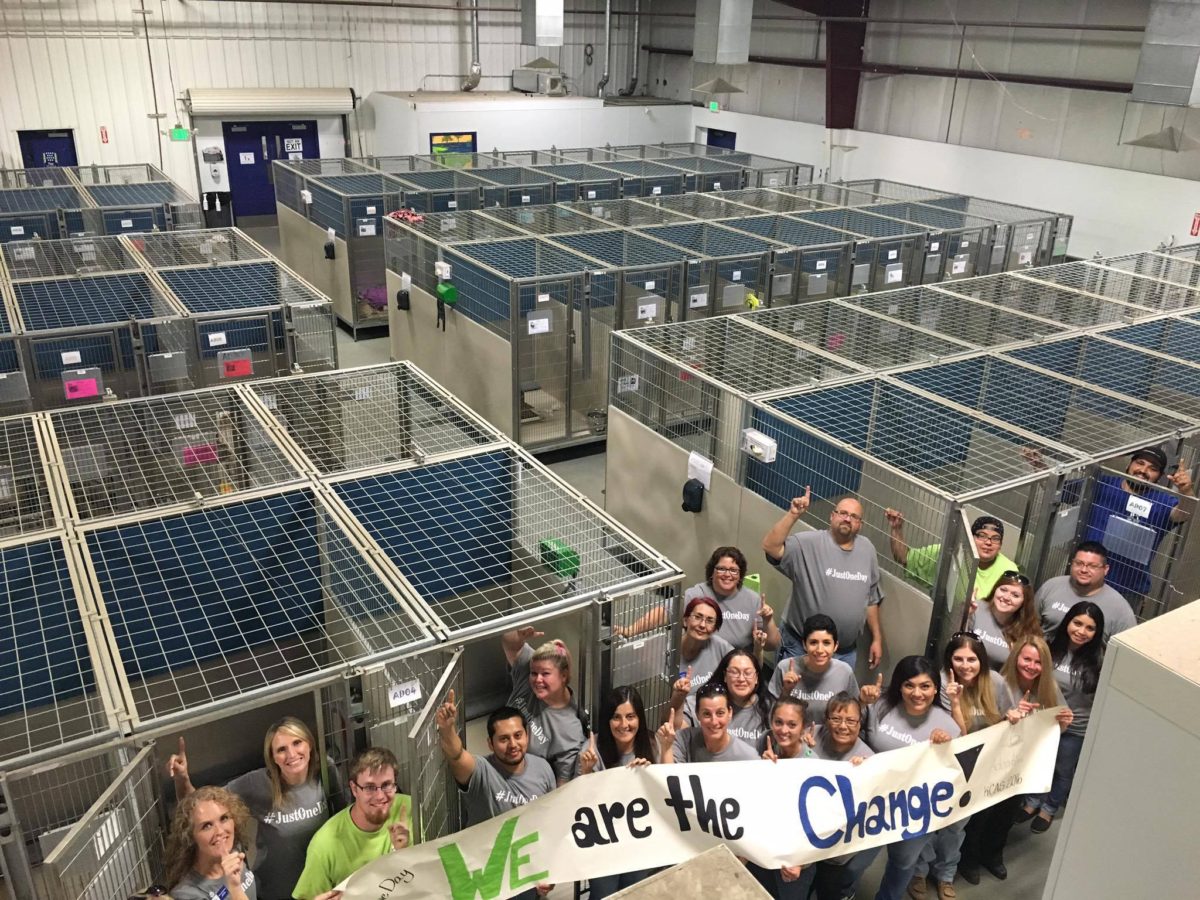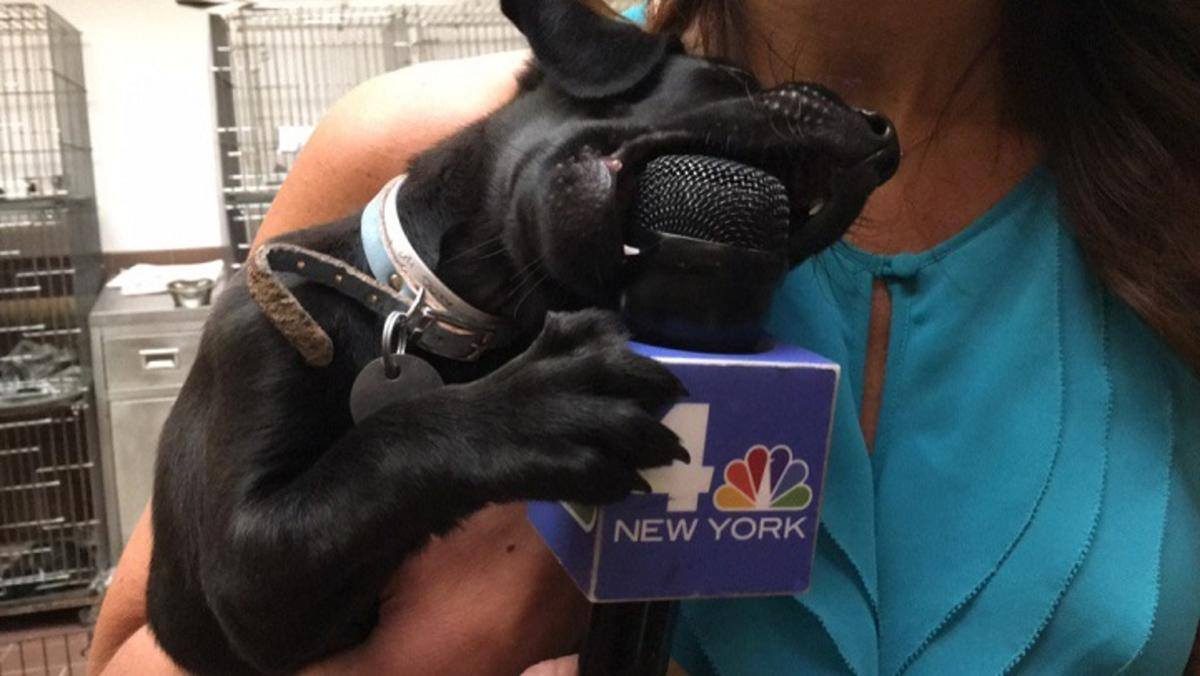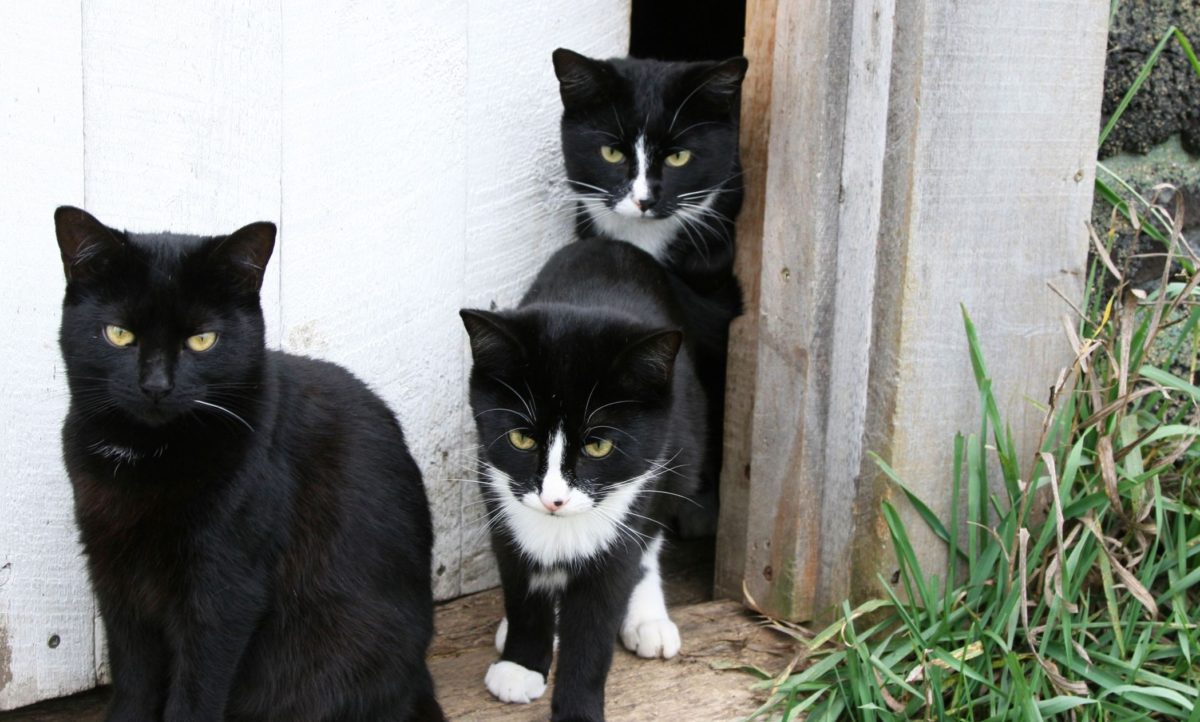And the promise of even better things to come…

A lot of people are saying good riddance to 2016. Many of those are not looking forward to 2017 either. This is understandable. But from the standpoint of animals, the first was a very good year; the second promises to be even better. Here are the highlights of a remarkable year:
THE GOOD
— Many, many years ago, a Michigan activist asked me how we could cultivate next generation’s No Kill leaders to ensure our efforts to reform shelters would continue. I assured him that this wasn’t something we necessarily had to worry about because we would achieve our goals during our lifetime. He called me the other day to let me know that, at the time, he had scoffed at my answer, but looking back today at the remarkable changes occurring in his home state, he now believed I was right. In 2007, Michigan shelters were killing close to 120,000 animals. It is now about 27,000. Out of 80 counties with shelters, over 50 are saving at least 90% and most of those are saving over 95%. Chippewa County, MI, for example, saved 98% of dogs and 98% of cats. Midland County saved 99% of dogs and 98% of cats. Roscommon saved 100% of dogs and 99% of cats. Marquette saved 97% of dogs, 96% of cats, and 97% of rabbits, hamsters, ferrets, and other animals. This mirrors success in other states and nationally.
— Every social justice movement in U.S. history used and uses three primary tools in their fight to help us achieve a more perfect union: advocacy, legislation, and litigation. Until fairly recently, the No Kill movement was the exception. We were good at advocacy, but legislation and litigation often fell far behind. Until now. Animal lovers increasingly turned to the courts, to the ballot box, and to the halls of power to achieve and ensure the perpetuation of the success they accomplished in 2016. In Napa County, CA, for example, animal lovers put Measure A on the ballot which requires that dogs, cats, and rabbits in the shelter be given “prompt and necessary veterinary care; appropriate socialization; [and] exercise.” It requires “accommodation of special needs in situations such as nursing mothers, unweaned animals, geriatric animals, or extremely frightened animals.” It requires that the shelter “seek a live outcome” for animals “including, but not limited to, training, fostering, and veterinary/medical support.” It increased the holding period from 72 hours to as many as six days. It makes it illegal for the shelter to kill animals until rescue groups are notified and given at least two days to rescue them. And it requires statistics to be posted on the shelter’s website at least every quarter and annually. The measure passed by a landslide. Elsewhere, we banned the retail sales of animals in a number of cities, closed the gas chamber in several states, and increased protections for animals in distress throughout the country by passing laws giving people the right to break into cars during periods of extreme heat.

— Not surprisingly, 2016 also saw the courts wake up to the special place animals have in our hearts and homes. The Georgia Supreme Court, the Oregon Supreme Court, the Ohio Court of Appeal and courts in other countries sided with animals and ruled that animals are more than “mere property.” Said the Oregon Court: “As we continue to learn more about the interrelated nature of all life, the day may come when humans perceive less separation between themselves and other living beings than the law now reflects. However, we do not need a mirror to the past or a telescope to the future to recognize that the legal status of animals has changed and is changing still:”
— We got serious about the prosecution of many forms of animal cruelty. Animal special crimes units were formed at the county, regional, and state level to give abused animals a team of prosecutors in their corner, we created animal abuser registries in others, all 50 states now have felony animal cruelty provisions, the FBI began tracking animal abuse cases this year, reporting it the same as other serious crimes (previously, animal cruelty offenses were categorized under “other offenses”), and at least one state now provides for the appointment of a guardian ad litem to ensure that the best interests of the animal remains paramount in prosecution, restitution, and post-conviction protection.
— In 2016, science caught up with what any animal lover already knows, with animal cognition becoming an important, legitimate, and mainstream area of study. Two decades ago, many scientists were still claiming that “attributing conscious thought to animals should be strenuously avoided.” Last year they fully affirmed that animals have complex and rich inner minds, culture, empathy, and justice: “Some animals seem to display pity, or at least concern, for diseased and injured members of their group. Stronger chimps help weaker ones to cross roads in the wild. Elephants mourn their dead… In a famous experiment : trained Diana monkeys [were taught] to get food by putting a token in a slot. When the oldest female could not get the hang of it, a younger unrelated male put her tokens in the slot for her and stood back to let her eat. There have also been observations of animals going out of their way to help creatures of a different species.” Sentience: check The ability to suffer: check Language: check Use of tools: check Culture: check Positive emotions like love: check Empathy: check Justice: check. All the attributes for legal personhood are in place.
— Science also increased our knowledge of dog and cat behavior which, in turn, lays the foundations of ever increasing save rates. In 2016, the view that a mere 90% save rate means a community is No Kill is no longer subject to debate. It has been unequivocally disproven. Indeed, even 98% is not high enough. In many cases, such as dogs who need behavior rehabilitation, science demonstrates that dogs (and cats) are incredibly resilient, that there is no such thing as “irremediable psychological suffering,” and that they can all be appropriately rehabilitated and/or placed through criteria that depends on the severity of the trauma.

— For cows and other animals, 2016 was the most remarkable year in recent memory. It was the year the cruelty-free hamburger became poised to save animals from slaughter, people from premature death, and the environment from climate catastrophe. Lab grown meat and plant-based analogues (such as the bleeding Impossible Burger) came into their own. In 2013, for example, the cost to produce a hamburger in a lab cost $330,000; it now stands at about $10 a patty and will continue to go down. Similarly, breakthroughs are happening to develop lab grown leather, fish, dairy, silk, egg whites, gelatin, and more. And the “Human on a Chip” program promises to eliminate animal tests by replicating the central nervous system, peripheral nervous system, blood-brain barrier and heart on a computer chip. Technology isn’t just revolutionizing our lives; it will revolutionize — and spare — the lives of billions of animals each and every year. Someday — hopefully within our lifetimes — the technology will feed billions of people in the world without a single animal being killed.

— 2016 saw the safest day, season, and perhaps year in shelters ever. A national “Clear the Shelters” event saw 45,000 animals who otherwise faced being killed adopted in a single day, emptying shelters across the country, erasing one week’s worth of killing in the U.S., and making it the safest day for homeless animals in America. It was not the only such event. Just One Day, which was the actual inspiration for Clear the Shelters, found homes for over 13,000 in a day and Home for the Holidays saw thousands of participating shelters place 1,200,548 between Thanksgiving and New Year’s, the highest number ever with shelters reporting long lines and empty kennels. Over 800 animals found homes in December at the Sacramento, CA, shelter alone: “There were so many adoptions that the Front Street shelter took in animals from other California shelters to meet demand.” Combined with the growing embrace of the No Kill philosophy and particularly, the programs and services of the No Kill Equation which make it possible, 2016 may be the best year ever in sheltering.
— Finally, if 2016 stands for anything, it was the year the large, national groups such as the Humane Society of the United States and the ASPCA, long champions of regressive shelters, regressive policies in shelters, and protecting the paradigm of killing they created, finally spoke the language the No Kill Advocacy Center has been speaking for more than a decade. They finally admitted that we can adopt our way out of killing, that community cats deserve protection (including embracing a Million Cat Challenge to save them), and that holiday adoptions and holiday promotions should be embraced.
THE BAD
As remarkable a year as it was, as can be expected, there were some tragic downsides. The movement lost two champions: Senator Tom Hayden and Lynda Foro. In 1998, Senator Hayden introduced the California Animal Shelter Law that, among other things, made it illegal for pounds to kill animals if rescue groups were willing to save them. Today, that law is simply known as the “Hayden Law.” In just one California county, the number of dogs and cats and other animals who went to rescue rather than be killed went from zero to roughly 4,000 every year because the pounds were precluded by the Hayden Law from killing animals rescue groups wanted to save. Over 800,000 and as many as a 1,000,000 animals have been saved rather than killed in the 18 years since the Hayden Law was signed by the Governor.

Lynda Foro, another stalwart champion of shelter animals, also died. Foro launched the first “No Kill Conference” in 1995, was the first to create a directory of No Kill shelters in the U.S., and steadfastly promoted the No Kill philosophy in the face of entrenched and ugly opposition by groups such as the Humane Society of the United States and the ASPCA. In the 1990s, while these groups were calling No Kill a “cancer” and vowing to stop the revolution in sheltering, Foro unapologetically promoted it to a national audience. I had the pleasure of holding a workshop advocating TNR for community cats (we called them “feral cats” back then) at Foro’s conference at a time when HSUS was calling TNR ‘subsidized abandonment,’ ‘abysmal,’ ‘abhorrent,’ and called on criminal prosecutors to arrest and jail cat caretakers. Thanks to pioneers like Foro, they are not saying those things anymore.
Unfortunately, some have gone too far. Realizing that they could achieve high “live release rates,” without doing the hard work of actually saving lives, some pounds began abandoning needy animals to the streets. Brevard County, for example, released little kittens and very sick cats into parking lots and the yards of empty homes, abusing TNR and RTF principles.

There was also a tremendous backlash against the success of TNR around the globe. Australia announced that it will kill 2,000,000 cats in five years. Some New Zealand officials want to take the life of every community cat in the country. Nativist Hawaii officials and Washington, D.C. nativists want to kill all community cats, too. And at least one such nativist issued a call for a nationwide genocide against cats, stating that cats throughout the continental U.S. should be killed “by any means necessary.”

While the No Kill movement has succeeded in building bridges to the future in all corners of the U.S., some states continue to dig trenches to a medieval past. Kentucky is one of those states. A study revealed that only 17% of Kentucky’s pounds are in compliance with state law governing shelters, 7% of pounds do not feed the animals every day, 11% do not provide clean water to animals, 6% keep no records on the animals, 5% house animals in cages too small for them to stand up or turn around, 24% of pounds do not provide heat or indoor housing during the winter, 37% of pounds keep animals in dirty cages, and more. The study also found dead animals in cages with live animals and suffering animals not receiving mandated veterinary care.
Pedals the bear, who walked upright because of a congenital condition and who was cared for by kind people, was gunned down in New Jersey. He was just one of hundreds of bears who were killed in a hunt supported by the Governor.

Montreal passed a breed ban that will consign thousands of dogs to death even though breed bans are based on blatant discrimination, kill a lot of dogs, are motivated by racism rather than science and don’t make anyone safer.
The former ASPCA CEO embraced puppy mills and claimed shelter dogs were dangerous.
Studies show that human encroachment, killing, and climate change are pushing most wildlife species to the brink of collapse.
And then, of course, there is PETA.
PETA had another terrible, no good, very bad year. While 2016’s rate of killing will not be known for a couple of months, we do know that only 3% of animals they took in the year before were adopted out. We also know that they rounded up community cats, including young and healthy cats and kittens, took them to the pound, had them killed but claimed them as “live releases” because they were not the ones who actually injected them with poison. In 2016, PETA also fought efforts to protect community cats across the country, embraced breed discriminatory laws that kill “pit bulls,” tried to repeal a Virginia state law that requires shelters, which PETA is registered as, to be “operated for the purpose of finding permanent adoptive homes,” and declared that unlicensed dogs are legally worthless, that animals have no value beyond the cost of a replacement, that stealing and killing animals is not “outrageous conduct,” and that illegal immigrants can have their animal companions killed without recourse. And yet, they continue to receive the support and adulation of other so-called “animal rights” groups.

Despite PETA’s killing of 32,744 animals, its efforts to defeat animal protection legislation and shelter reform efforts across the nation, the animal rights movement continues to collectively avert its eyes and embrace PETA, thousands of animals every year be damned. The wait for an animal rights organization willing to unequivocally fight for the principles it fundraises on continues.
So while we’ve won many battles for animals in 2016, the war to build the kind of world the animals deserve, continues. As we move into a new year that presents, like every other before it, opportunities to champion the animals and our hopes for their brighter future; to stand by, rather than sacrifice, our most cherished principles, let us take increased power from the great potential highlighted by our victories, and increased determination to overcome the roadblocks that continue to stand between animals and that brighter, better tomorrow.
————-
Have a comment? Join the discussion by clicking here.